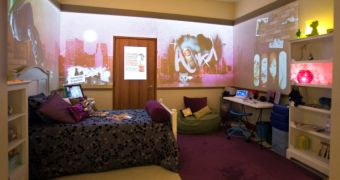Microsoft Home of the future, an innovative initiative designed to explore next generation technologies in the household of tomorrow, is moving to the next stage in its evolution, according to the Redmond company.
Jonathan Cluts, director of the Strategic Prototyping Team responsible for the Microsoft Home, confirmed that Microsoft Home is right in the middle of a big revamp.
However, Cluts did not offer any specific details related to the new prototypes which will be introduced, as well as the deadline when the overhaul will be completed.
“Really the goal of the home is to expand people’s ideas of what’s possible with technology, and have discussions about technology in a non-traditional setting,” Cluts reveals. “It’s not a conference room, and it’s not a PowerPoint presentation. These ideas are much easier to show than explain, and we liked the idea of an immersive experience that showed what it would be like if some of this technology came to fruition.”
Microsoft Home first opened its doors back in 1994, a project which continues to grow under Craig Mundie, Microsoft’s chief research and strategy officer.
The home features iris scanning technology at one point in 2000, but now the front door can be opened via palm-scan or mobile phone. Just as visitors step inside, Grace, the home’s computer, can be tapped for a variety of information from the weather to appoints, and even to help cook a meal by using specific ingredients.
“The Home is a terrific space that enables us to prototype a truly holistic view of what the future could look and feel like,” Mundie reveals.
From the hundreds of thousands of visitors one question keeps being repeated as a leitmotif, since people are quite interested in knowing just how soon they’ll be able to get all the “toys” featured inside the Microsoft Home.
“It’s pretty close, as it’s a place we showcase the vision that I, and others, have been evangelizing,” Mundie adds.
At the core of the home is a revolution in human - computer interaction, a new model based on natural user interfaces (NUIs).
NUI sensors can understand human gestures, touch, voice commands, can detect presence, etc. Innovative devices such as Kinect for Xbox 360 are already available on the market, showing the true power of NUI.
“It’s important to invest in exploring long-term technology trends,” Mundie commented. “The Strategic Prototyping Team, working closely with me, is charged with maintaining a forward-looking view and building prototypes so that we can ‘live in the future’ today.
“The Home allows us to see how new experiences may impact hardware and software design, user interfaces, security and privacy, and more – and socialize those ideas with people inside and outside the company,” he said.
It’s important to note that while prototypes, the technology featured inside the Microsoft Home might never become commercial products. Microsoft is interested more in exploring future concepts, thinking as much as 10 years ahead, rather than predicting the future itself.

 14 DAY TRIAL //
14 DAY TRIAL //